Arts & Entertainment Community Transportation
Harborview-Stinson roundabout to get experiential art installation
It can be tricky, as an adult, to see some of the Caldwells’ work. But if you’re a little kid, it is easy to come face-to-face with some of the metal artists’ sculptural pieces, which are embedded into brick and pavement that make up intentional parts of their larger work.
“We really like doing stuff in the ground plane, love doing things in the pavement. They have a different kind of effect on people, and especially children. Kids have a special feeling of ownership for this stuff in the ground,” Judith Caldwell said. “They’re like, ‘Oh, somebody did this for me.’ And it’s true. We did do it for them, because they’re close to it, you know? … They’re fascinated by stuff in the ground because everything else is just so big and tall and out of their reach.”
Judith and Daniel Caldwell will be installing artwork at the roundabout at the intersection of Harborview Drive and Stinson Avenue. The pair has created several pieces on prominent display, including the Flying Fish at SeaTac Airport. In the course of their nearly 27-year-long career together, they have embedded close to 2,000 pieces of sculpted metal into concrete, brick and pavement as parts of larger work in locales around Washington state.
Compass rose, map and critters
The city Arts Commission selected the Caldwells’ idea from among the proposals for artwork at the roundabout. The Caldwells proposed a massive compass rose, complete with several kinds of animals and plants native to the area. Arts Commission Chair Sonja Johnson said the proposal stood out to the commissioners.
All told, the project is estimated to cost $21,616.65, Gig Harbor city clerk Josh Stecker said. The budget came from the City’s Public Art Fund, created in 2004. Stecker said it consists of accumulated, unspent arts funds.
In September 2024, the Caldwells presented the Arts Commission with updates and showed commissioners some prototypes of the sea creatures they planned to lay in the pavement.
“They do such detailed work and they were really very good-looking,” Johnson said. “They had done so much research as to what these different creatures were, and where they lived, and it was really interesting just hearing the artists talk about that.”
Caldwell said that the piece will be entirely embedded in the pavement next to the roundabout. But the point of view will not simply be from a “grounded” perspective, so to speak.
“Our proposal for a design approach to the sidewalk art project draws inspiration from vintage nautical charts,” the Caldwells’ winning proposal reads. “In an earlier era, these charts included highly decorative compass roses, along with images of ships sailing across the water, sea monsters and other exotic flora and fauna, and featuring intricate patterning and detail.”
Where it goes
The Caldwells envision the 8-foot by 10-foot space on the sidewalk meant to display the artwork as a sort of logical translation to a map or chart, “anchored by a compass rose surrounded by images of sea creatures and several historic sailing vessels related to Pacific Northwest history.”
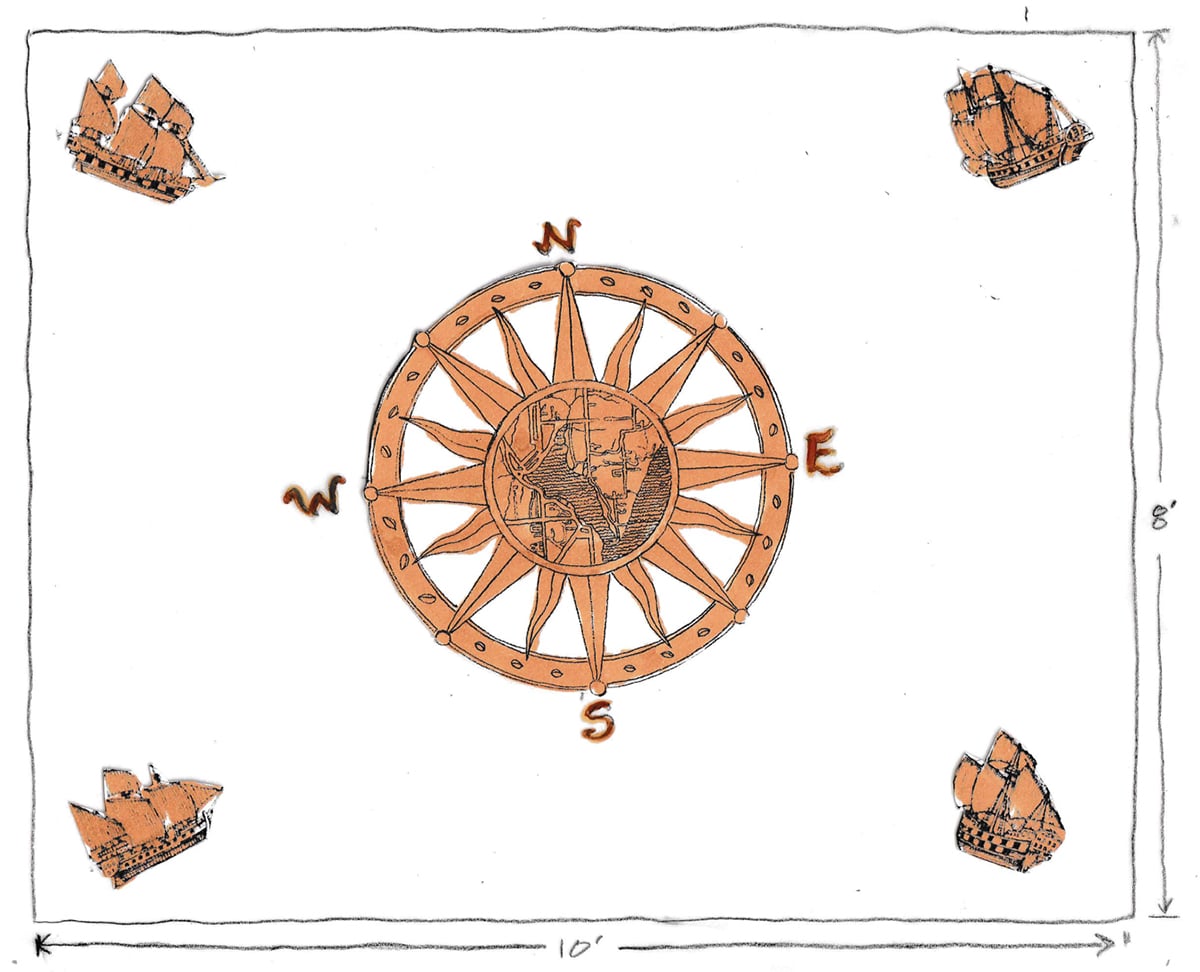
The Caldwells’ proposal, as pictured in the Sept. 11, 2024, Arts Commission meeting agenda packet.
“I thought people walking around would like to see at that point where they were, in relation to the points of the compass and also what the town looked like if you were, you know, a seagull,” Caldwell said.
Caldwell later sent along an image of where the artwork would be placed. She wrote that “the artwork will be something that people discover as an unexpected surprise (and hopefully, delight.)”
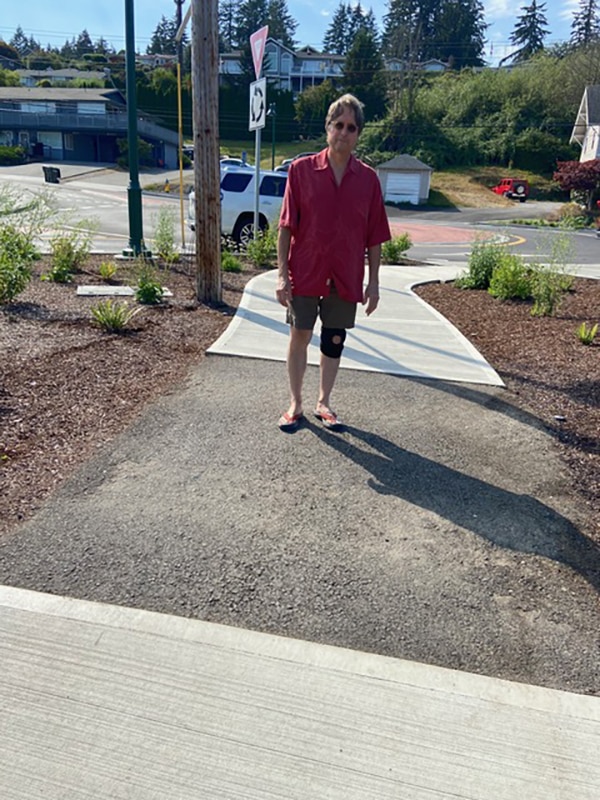
Daniel Caldwell stands at the future location of he and Judith’s artwork. Photo courtesy Judith Caldwell
No-slip surface
While the first thing that springs to mind may be the slippery nature of metal, that’s not a challenge the Caldwells must surmount with their pieces. The artists create their pieces using sand molds, which lends a highly textured surface and therefore poses little to no risk of slipping on the metal pieces in the pavement.
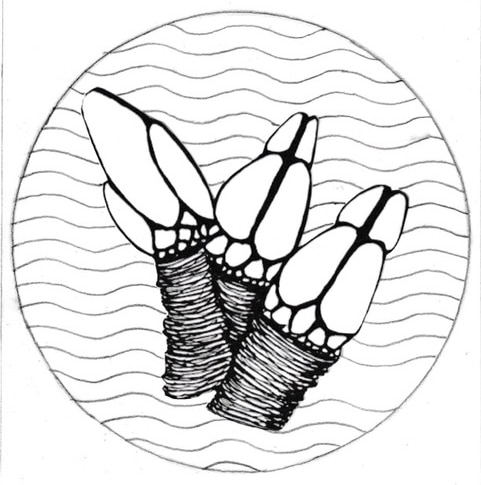
This gooseneck barnacle is an example of the art that will be installed around the compass rose. Courtesy of Judith Caldwell
Instead, the challenge with this piece, as with all their others, she said, is how to make the smaller sculptural elements stand out without being obtrusive. They must maintain a delicate balance in order to allow people to fully experience the art, rather than just look at it.
For instance, she said, Primavera, a piece in Bellevue’s Spring District Park, includes 200 spring flowers sprinkled on the ground in front of the much larger, sun-topped main column of the metal sculpture. But because of what the piece is and is supposed to represent — “Primavera” means “Spring” in Spanish — those little flowers are just as important to the piece as the main body.
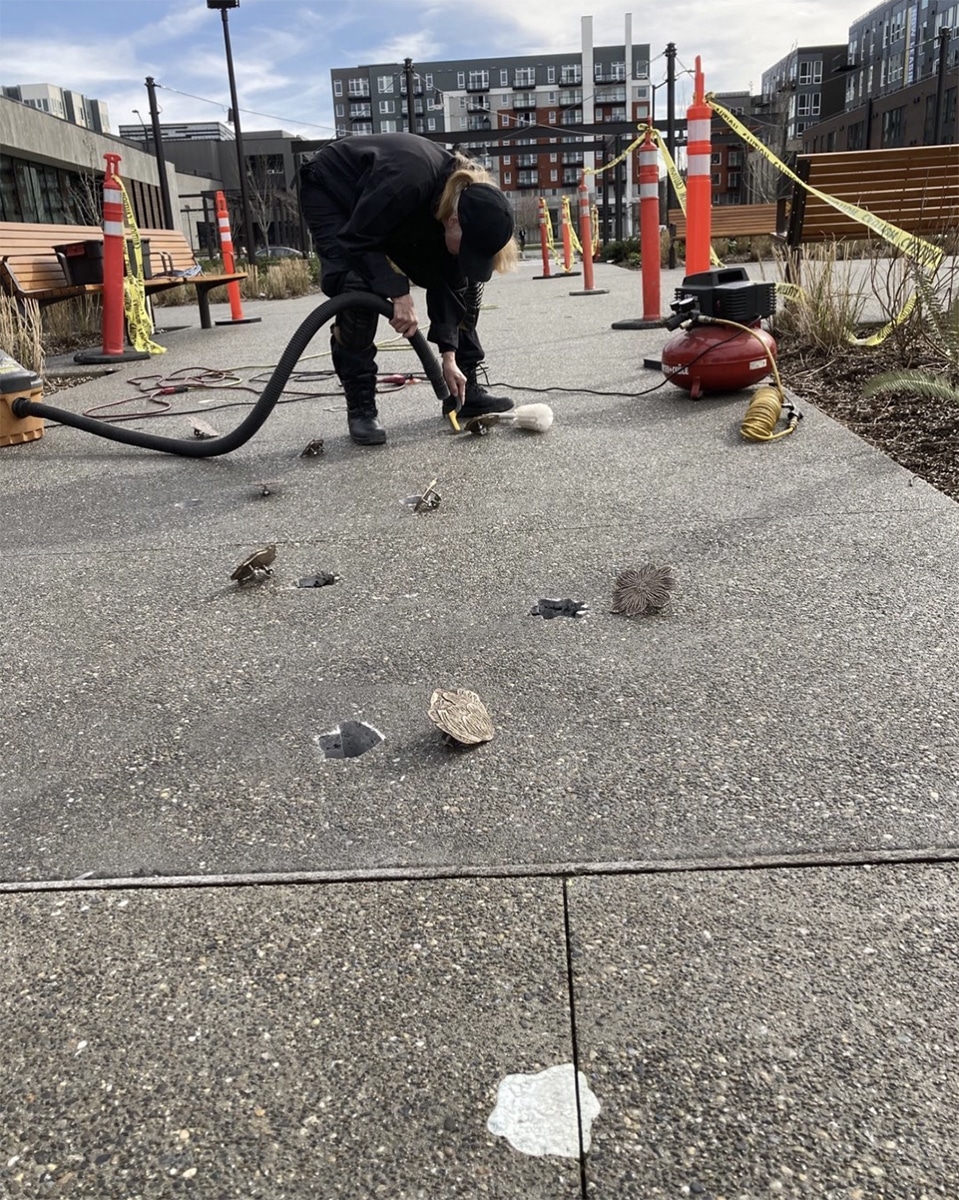
Flowers sprinkled on the ground are part of the Primavera sculpture in Bellevue. Photo courtesy Judith Caldwell
“You can look at close-ups [of each little flower], but to see a whole project and the way that it’s laid out, where we have 200 castings over 200 feet, doesn’t fit in the photograph,” Caldwell said of trying to photograph Primavera.
All told, the work will include 25 cast bronze medallions of marine creatures. They rang in size from five to 10 inches.
Caldwell said that work on Gig Harbor’s compass rose is slated for installation in late spring or early summer.
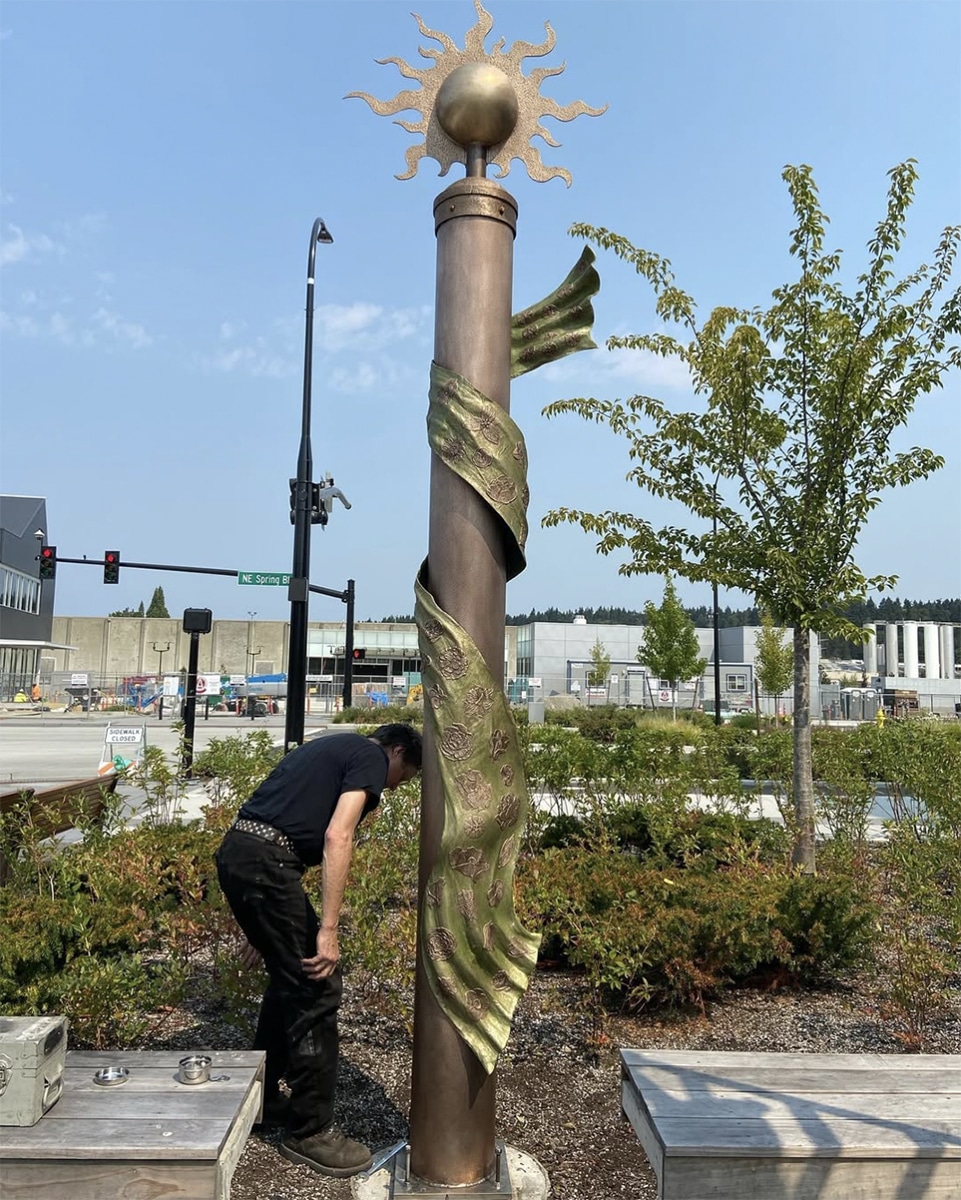
The Caldwells created the Primavera sculpture in Bellevue’s Spring District Park. Photo courtesy of Judith Caldwell
